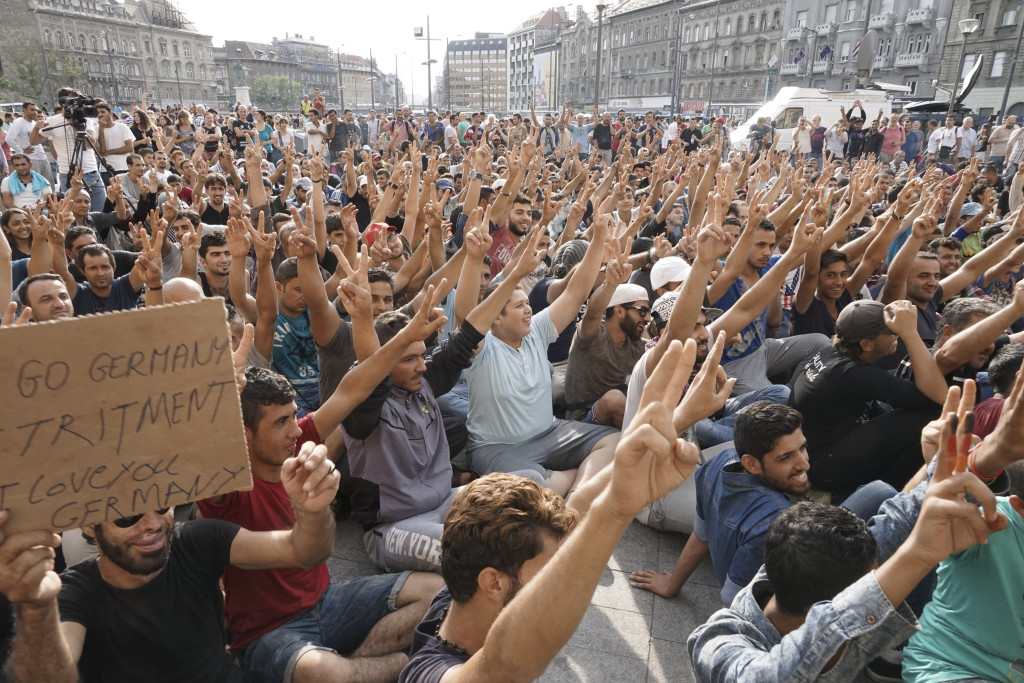A Refugee’s Journey: From Syria to Safety
In 2011, a civil war began in Syria. Beginning with pro-democracy protests, the war became more than a call for President Bashar al-Assad’s resignation. Now the country is battling not only political difference but religious as well. This has encouraged the rise of jihadists groups according to BBC News.
“A United Nations (UN) commission of inquiry, investigating alleged human rights violations since March 2011, has evidence that those on both sides of the conflict have committed war crimes – including murder, torture, rape and enforced disappearances. Government and rebel forces have also been accused by investigators of using civilian suffering – such as blocking access to food, water and health services – as a method of war,” BBC News stated.
Due to the heinous crimes being committed to civilians, many have fled the country. According to the Syria Regional Refugee Response, over four million people have left Syria as refugees. Most have fled to neighboring countries such as Egypt, Jordan, Iraq, Lebanon, and Turkey. Others have recently traveled farther to Germany, Sweden, France, United Kingdom, Denmark, Hungary, and Austria.
“About 1,500 Syrian refugees have been admitted to the United States since the start of the conflict in 2011,” reports CNN, though recently many United States citizens do not appear very welcoming. Following the attacks in Paris, social media has been swept by a large amount of hate and fear in regard to allowing Syrian refugees into the country. Numerous hate crimes have been committed such as the vandalizing of mosques and the open rejection by 27 state governors who have stated they would block refugees from entering their states, claiming the attacks in Paris as valid reasoning as stated by Aljazeera News.
There seems to be a large misunderstanding across the country of how refugees are able to enter the country. When students were asked if they knew about the refugee process of coming to the U.S., many of them were not able to provide any information. Adele Reinoehl ’18, Haley Hutchinson ’18, and Stephanie Miller ’17 all admitted to not knowing any information about refugees or the process they go through.
Entering the United States as a refugee is one of the hardest ways to enter the country. Refugees go through extensive screening processes before being approved. The United States Refugee Admissions Program (USRAP) provides a flow chart with the following process. Refugees begin with a referral for resettlement consideration from UN High Commissioner, U.S. Embassy, or a specially trained non-government organization. The referral then goes to the U.S. Refugee Coordinator at the Department of State. From there the applicant is educated about the process and must provide any and all documentation pertaining to his or her background such as birth certificates, drivers’ licenses, bills, or any other documentation that can prove identity. The State Department then begins biographic security checks meaning the U.S. government researches the applicant’s background to find out if his or her story matches the documentation. This is done through a series of interviews, name checks, and checking all of the “data points” of the applicant’s designated age ranges.
If the applicant passes this process, fingerprints are taken and screened against the Department of Defense, FBI, and Homeland Security biometric databases. The government then determines if the applicant is a refugee, if they are firmly resettled in a third country, and whether the applicant is admissible to the U.S.
Assuming the applicant passes this process, the individual is then given a medical screening as well as cultural orientation to prepare for living within the U.S. Once given the approval to travel to the U.S. the resettlement agency helps the applicant with social and economic problems. The applicant must then go through additional background checks upon arrival in the U.S. within a specific time period. If the applicant passes all of these checks then he or she is finally able to live in the U.S. Refugees must also apply for a permanent residency (green card) one year after arriving in the country.
In the midst of the confusion over refugees, one spoke out about her journey. Bosnian American Association of Iowa Executive Director Buljušmić-Kustura Arnesa spoke out on social media, tweeting the entirety of the process from start to finish. For her family it took two years for their applications to be approved.
Unlike what some people believe, the process to become a refugee in the United States is long and tiresome. Refugees are coming from highly volatile areas and are leaving everything they know and love for safety.

